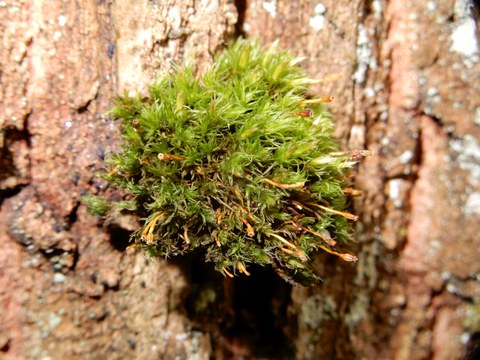Feb 17, 2022
New study: Recolonization of forests by bryophytes

Bruch’s Pincushion (Ulota bruchii) has re-colonized deciduous trees
Epiphytic bryophytes (species growing on tree bark) substantially contribute to the plant diversity of forest ecosystems. Additionally, they are sensitive bioindicators for element input. The ore mountains (‚Erzgebirge‘) in Saxony was impacted by high S-input in the second half of the 20th century. Particularly in epiphytes, species communities were dominated by few acidophytic species until the late 1990s.
After a period of only 15 years, we observed an intensive re-colonization of forest ecosystems by epiphytic bryophytes. Recent species composition among host trees red beech sycamore maple and mountain ash is very similar. Contrastingly, differences between Norway spruce and deciduous trees were highly significant. The high share of short-lived species points on an early stage of epiphyte succession.
Furthermore, numerous species could be found which had not been reported before the large area pollution (19th to early 20th century). This indicates further changes in environmental conditions. These may particularly include effects of climate change and nitrogen input, respectively.
Original publication:
Baumann, M., Dittrich, S., von Oheimb, G. (2022). Recolonization of epiphytic bryophytes after decades of air pollution in forest ecosystems in the Erzgebirge (Ore Mountains) shows the importance of deciduous trees for the diversity of this species group, Forest Ecology and Management 509: 120082. https://doi.org/10.1016/j.foreco.2022.120082.